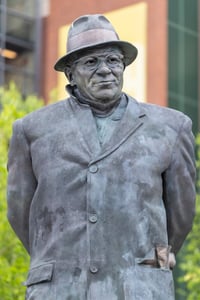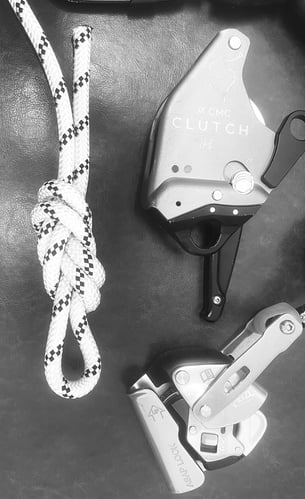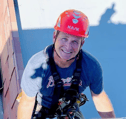The Quest for the Perfect 8
Anyone who is a fan of football, more specifically the National Football League, has heard of legendary Green Bay Packers Coach Vince Lombardi. If you are really into NFL football, you know that not only was Lombardi one of the best Head Football coaches in history, he was also a legendary wordsmith. I cannot count the times I have heard a quote that I recognized, reached for my phone to google it and found that it was attributed to Coach Lombardi. Like I said, wordsmith.
Leave it to a firefighter to think they can improve on the words of a legend. On a column of the tower at my department in Idaho, written in magic marker, are the words…
The 6 P’s
PerfectPractice
Prevents
Piss
Poor
Performance
 The actual Lombardi quote is much more prophetic. “Practice does not make perfect. Only perfect practice makes perfect.”
The actual Lombardi quote is much more prophetic. “Practice does not make perfect. Only perfect practice makes perfect.”
How do we apply this to technical rescue? Rope and confined space rescues are inherently ugly. No matter how grandiose the final product may look, the process to get there is like our favorite restaurant, we may love the food, but we don’t want to see the kitchen where it gets made. The initial plan for a rescue rarely survives first contact. The better we are at adjusting our plan on the fly, the better the outcome. Perfect is not a word I would choose to describe a well-performed technical rescue. Despite that, our training regimen should include components where perfection is the expectation and the goal.
One place we can easily implement the expectation of perfection is in our knot craft. More specifically, the Figure 8 on a bight. The venerable Figure 8 on a Bight is found in every rescue curriculum, making it an easy target in our quest for targeted perfection. Embarrassingly, the perfect 8 was not a staple of my personal rescue toolbox for the start of my rescue journey. Granted, my 8’s were safe. They were recognizable, but they weren’t perfect.
As my wallet caught up with my thirst for rescue knowledge, I was able to attend more and more classes and workshops with instructors and mentors who helped shape me as rope practitioner. Delaney, Cartaya, Rush, Harbach, Wood, Evans, McCuller, Luscinski, Bradbury, Spect, O’Connell and Carlsen. If you know any of those names and have been lucky enough to train or work with them, you are truly blessed as a rescuer. While they all have varying approaches to solving problems, they also have many things in common. The most noticeable being that when they have 100% control of the circumstances, they never take short cuts…not ever. Oh, did I mention that their 8 on bights are perfect?
The venerable Figure 8 on a Bight is found in every rescue curriculum, making it an easy target in our quest for targeted perfection.
I have found as an instructor, that the perfectly tied and dressed Figure 8 on a bight is often an early indicator of a rescuer’s future success. As Lombardi said, “Watch your actions, they become your habits. Watch your habits, they become your character.” Consistency in knot craft creates positive habits that carry over to every other facet of technical rescue.
 Perfect 8’s also have numerous benefits in the field.
Perfect 8’s also have numerous benefits in the field.
Knot Security: Properly dressing the Figure 8 on a bight ensures that it is tightened and seated correctly. A well-dressed Figure 8 is less likely to slip or come undone under load, providing greater safety.
Strength and Reliability: A properly tied Figure 8 on a bight maintains its intended shape, distributing the load evenly across its structure. This enhances the knot's strength and reliability, reducing the risk of failure.
Ease of Inspection: A well-dressed Figure 8 on a bight is easier to inspect visually. A well-dressed knot allows for quick identification of any potential mistakes or mis-ties.
Untying Efficiency: Dressing the knot appropriately ensures that it is easier to untie after use. Knots that have been properly dressed are less likely to jam or become excessively tight, making it simpler to undo the knot when needed.
The benefits of a properly tied knot are well documented. What we can’t measure is the countless benefits that come from the mindset of always tying a perfect Figure 8 on a Bight. Our purpose as rescuers and practitioners of rope work is to perform high risk skill sets quickly, safely and efficiently in oftentimes unyielding circumstances. WE MUST PERFORM.
And, like the coach says, “Winning Isn’t Everything, It’s The Only Thing.”
 Brad Warr is a Senior Chief Instructor for Roco Rescue. He joined Roco Rescue in 2003 and currently teaches a wide variety of technical rescue classes including rope rescue, confined space rescue, trench rescue, and structural collapse. He is also a member of Roco’s Contracted Safety & Rescue Teams (CSRT), providing standby rescue services for plants, refineries and other industrial facilities. Brad became a firefighter for the Nampa (ID) Fire Department in 1998 and was promoted to Captain in 2006. He retired earlier this year. His responsibilities included training the department’s Heavy & Technical Rescue Team. Before joining the fire department, Brad worked as an Emergency Response Technician for a large manufacturer in Boise, where he was responsible for OSHA compliance, emergency medical response, confined space/rope rescue response and hazardous materials response.
Brad Warr is a Senior Chief Instructor for Roco Rescue. He joined Roco Rescue in 2003 and currently teaches a wide variety of technical rescue classes including rope rescue, confined space rescue, trench rescue, and structural collapse. He is also a member of Roco’s Contracted Safety & Rescue Teams (CSRT), providing standby rescue services for plants, refineries and other industrial facilities. Brad became a firefighter for the Nampa (ID) Fire Department in 1998 and was promoted to Captain in 2006. He retired earlier this year. His responsibilities included training the department’s Heavy & Technical Rescue Team. Before joining the fire department, Brad worked as an Emergency Response Technician for a large manufacturer in Boise, where he was responsible for OSHA compliance, emergency medical response, confined space/rope rescue response and hazardous materials response.




